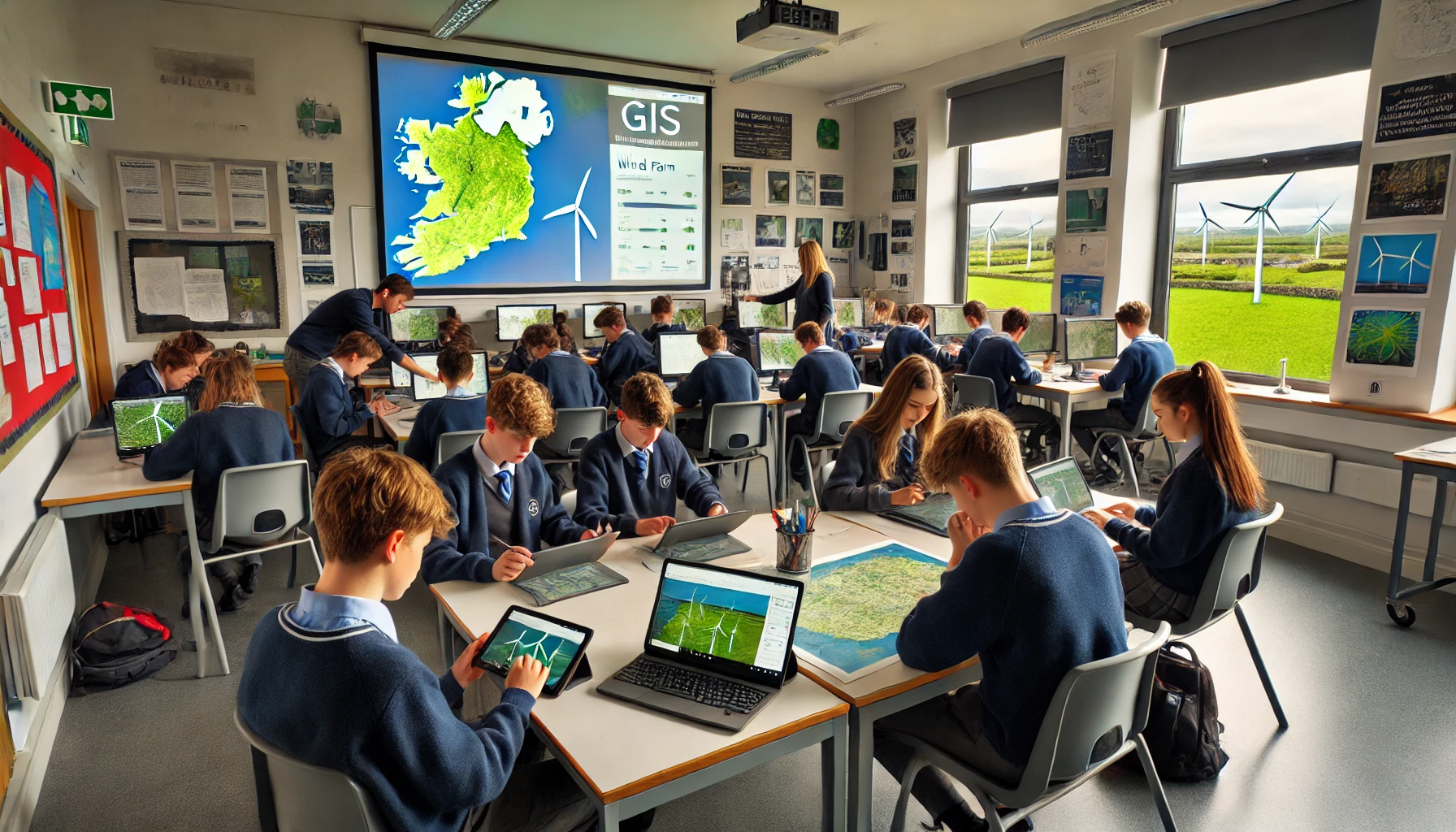Empowering Teachers with GIS: Enhancing Sustainability Education in Irish Schools
The study evaluates the role of teacher agency in integrating GIS technology into sustainability education in Irish secondary schools through the 5*S initiative. It highlights how teacher autonomy, training, and collaboration are essential for successfully using GIS to teach the Sustainable Development Goals despite technical challenges.

A study published in the International Research in Geographical and Environmental Education explores how teachers in Ireland integrated Geographic Information Systems (GIS) into their teaching of sustainability. This research was conducted by Sasha Brown and colleagues from Maynooth University, Dublin Technological University, Ordnance Survey Ireland, and other collaborating institutions. The study focuses on a project called "5*S: Space, Surveyors, and Students – STEM and the Sustainable Development Goals," which was developed to bring satellite data, GIS technology, and the United Nations Sustainable Development Goals (SDGs) into lower secondary school classrooms. The project aimed to provide teachers with innovative resources and tools that could help students understand real-world sustainability issues, thus aligning with both the national STEM curriculum and the broader global goals set out by the UN.
Teacher Agency in Adapting GIS Tools
The study centered on the concept of teacher agency, which refers to the capacity of teachers to make independent decisions about how they approach teaching, including the use of new technologies and methodologies in the classroom. Through interviews and a focus group with three teachers who had undergone training and engaged with the 5*S initiative, the researchers examined how these educators incorporated GIS and sustainability concepts into their curriculum. The findings revealed that teacher agency was crucial in determining how effectively the new tools were utilized, as teachers drew upon their personal philosophies and professional experiences to adapt the resources to their specific classroom needs.
Engaging Students in Sustainability through GIS
The 5*S project was designed to provide teachers with practical tools and data, primarily using GIS software, that could connect classroom learning to global sustainability issues. One example of this was a lesson in which students were tasked with evaluating potential wind farm locations in Ireland. Using GIS and satellite data, students were able to assess real-world criteria such as environmental impact and energy efficiency. This type of hands-on, inquiry-based learning allowed students to engage with complex issues like climate change and renewable energy in a way that was directly applicable to their communities. Teachers found that such activities not only helped students understand geographical and scientific concepts but also fostered critical thinking and problem-solving skills.
Challenges in Implementing GIS in Classrooms
Despite the positive reception of the 5*S initiative, the study also identified several challenges that teachers faced in implementing GIS-based learning in their classrooms. A significant barrier was the teachers’ lack of confidence in using the software, particularly for those who had little prior experience with GIS technology. Additionally, the technical infrastructure in schools was often insufficient to support the seamless integration of these tools, with many teachers citing issues such as limited access to computers and unreliable internet connections. These challenges were further exacerbated by the COVID-19 pandemic, which disrupted normal teaching practices and made it difficult for teachers to access the resources and training they needed to fully integrate GIS into their lessons.
Leveraging Teacher Autonomy for Success
Nevertheless, the study found that teachers who were able to leverage their own agency and teaching philosophies were more successful in overcoming these obstacles. For instance, one teacher with a background in geography was able to integrate GIS into both geography and science lessons, using the technology to teach students about spatial data and its applications in understanding global issues like climate change. Another teacher, who had less experience with GIS, focused on the potential of the tools to foster independent learning and critical thinking among students. Both teachers highlighted how GIS could be used to teach the SDGs in a way that felt relevant and engaging for students, particularly by allowing them to see how these global goals intersect with their local environment.
Need for Further Training and Collaboration
The researchers emphasized the importance of providing teachers with adequate training and support to build confidence in using new technologies like GIS. They also suggested that collaboration between teachers from different subject areas, as well as partnerships with external experts in fields such as surveying and environmental science, could help to overcome some of the technical and pedagogical challenges associated with implementing GIS-based learning. The study highlighted the potential for projects like 5S to enhance sustainability education in schools, particularly by making abstract concepts like the SDGs more tangible for students through real-world applications. By giving teachers the autonomy to adapt these resources to their own classrooms, the 5S initiative demonstrated how innovative teaching tools can be successfully integrated into the curriculum when teachers are empowered to take the lead in shaping their own pedagogical approaches.
The study underscored the critical role of teacher agency in determining the success of initiatives like 5S. While the integration of new technologies like GIS presents several challenges, particularly in terms of technical infrastructure and teacher confidence, the findings suggest that with the right support and resources, teachers can use these tools to create more engaging and impactful learning experiences for students. The research calls for further investment in teacher training and collaboration to ensure that projects like 5S can continue to play a vital role in advancing sustainability education in schools.
- FIRST PUBLISHED IN:
- Devdiscourse
ALSO READ
ECW and UNHCR Launch $2.6M Initiative to Integrate Refugee Children into National Systems
Emerging Technologies and Values Shape Careers for European and Indian STEM Graduates
R Systems Named Major Contender in 2024 Everest Group Matrix
IIT Ropar and KCET Amritsar Inaugurate AWaDH Cyber-Physical Systems Lab to Advance Technical Education and Innovation
India's Tech Ecosystem Soars: Deloitte Awards Spotlight Dynamic Growth










